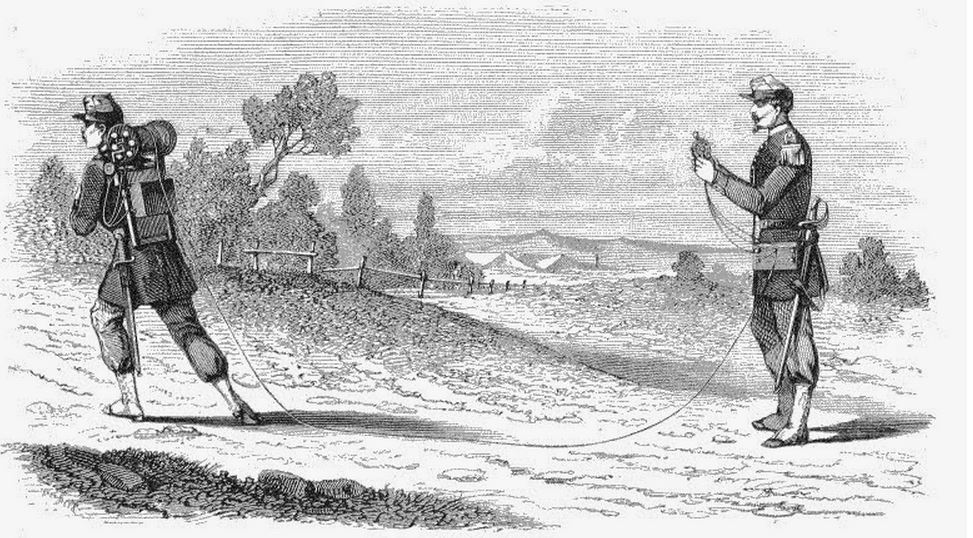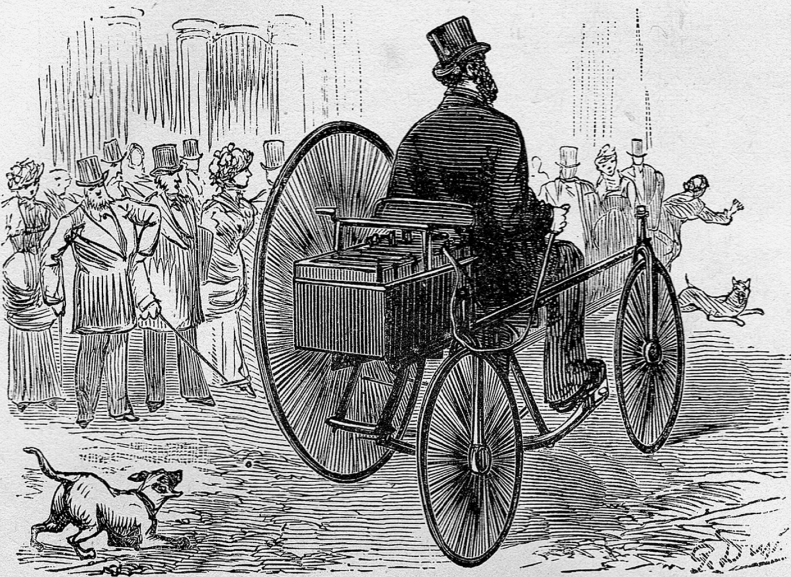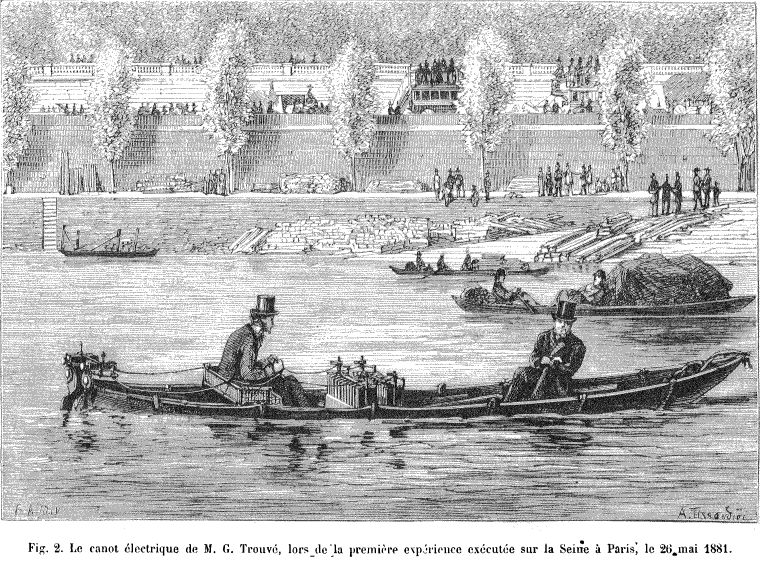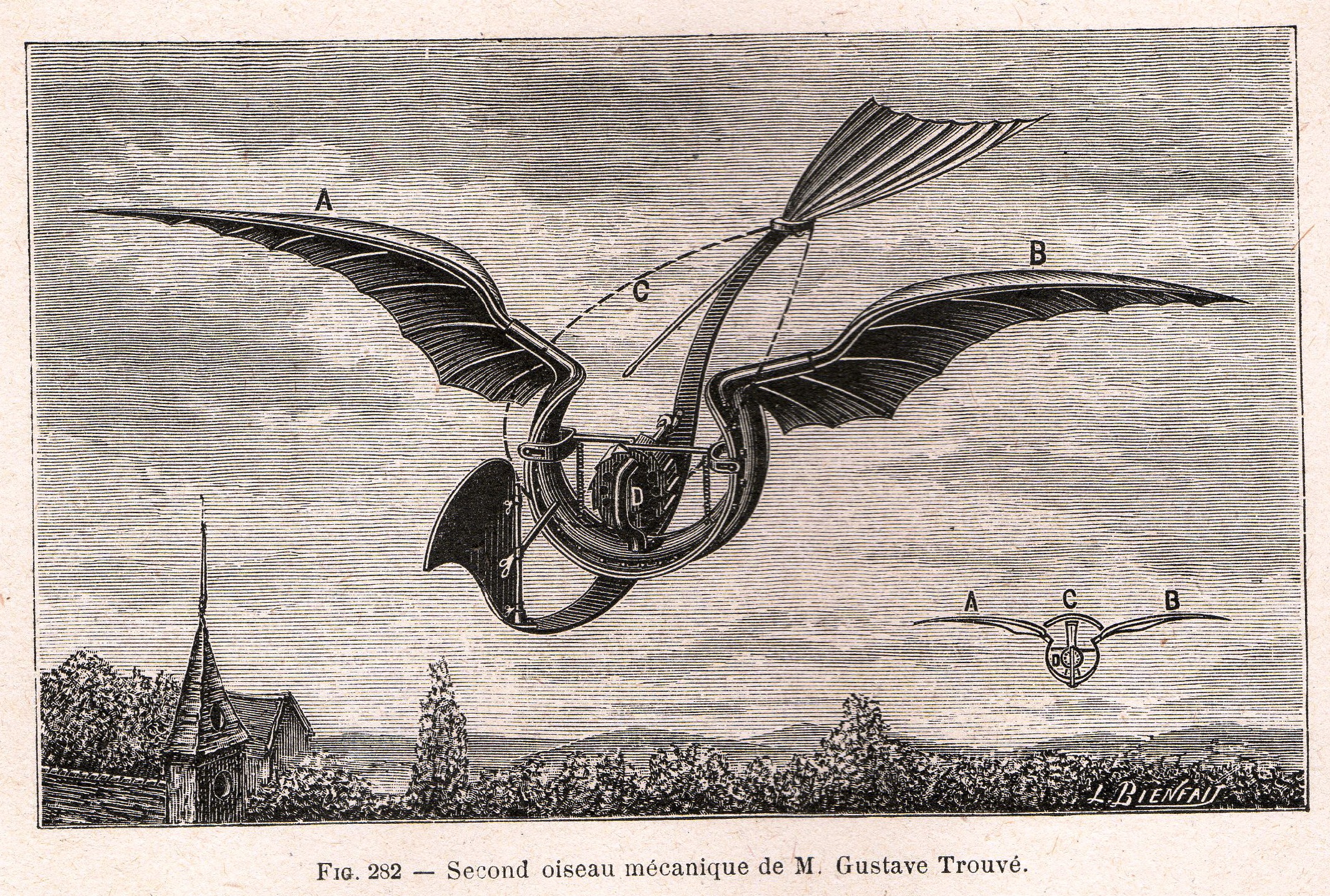Gustave Trouvé on:
[Wikipedia]
[Google]
[Amazon]
Gustave Pierre Trouvé (2 January 1839 – 27 July 1902) was a French electrical engineer and inventor in the 19th century.
Trouvé was born on 2 January 1839 in
/ref> He invented a carbon-zinc pocket-sized battery to power his miniature electric automata which soon became very popular. A similar battery was invented and widely commercialized by

 Gustave Trouvé took part in the improvement in communication systems with several noteworthy innovations. In 1870, he developed a device for locating metal objects such as bullets in human patients. It used electric conduction, but unlike the one made by Professor Favre in 1862, Trouvé's buzzer made a different sound for lead and iron. In 1872 he developed a portable military telegraph whose cabling enabled rapid communication up to a distance of one kilometer, enabling the swift transmission of both orders and reports back from the Front. In 1878, he improved the sound intensity of
Gustave Trouvé took part in the improvement in communication systems with several noteworthy innovations. In 1870, he developed a device for locating metal objects such as bullets in human patients. It used electric conduction, but unlike the one made by Professor Favre in 1862, Trouvé's buzzer made a different sound for lead and iron. In 1872 he developed a portable military telegraph whose cabling enabled rapid communication up to a distance of one kilometer, enabling the swift transmission of both orders and reports back from the Front. In 1878, he improved the sound intensity of
 In 1880 Trouvé improved the efficiency of a small electric motor developed by Siemens and using the recently developed rechargeable battery, fitted it to an English James Starley tricycle, so inventing the world’s first electric vehicle. Although this was successfully tested on 19 April 1881 along the Rue Valois in central Paris, he was unable to patent it. Trouvé swiftly adapted his battery-powered motor to marine propulsion; to make it easy to carry his marine conversion to and from his workshop to the nearby River Seine, Trouvé made it portable and removable from the boat, thus inventing the outboard engine. On 26 May 1881 the 5m Trouvé prototype, called Le Téléphone reached a speed of 1 m/s (3.6 km/h) going upstream at 2.5 m/s (9 km/h) downstream.
Trouvé exhibited his boat (but not his tricycle) and his electro-medical instruments at the International Electrical Exhibition in Paris and soon after was awarded the Légion d'Honneur. He also miniaturized his electric motor to power a model airship, a dental drill, a sewing machine and a razor.
Gustave Trouvé next invented his "Photophore", or battery-powered frontal headlamp, which he developed for a client, Dr Paul Hélot, an ear-nose-and throat specialist of
In 1880 Trouvé improved the efficiency of a small electric motor developed by Siemens and using the recently developed rechargeable battery, fitted it to an English James Starley tricycle, so inventing the world’s first electric vehicle. Although this was successfully tested on 19 April 1881 along the Rue Valois in central Paris, he was unable to patent it. Trouvé swiftly adapted his battery-powered motor to marine propulsion; to make it easy to carry his marine conversion to and from his workshop to the nearby River Seine, Trouvé made it portable and removable from the boat, thus inventing the outboard engine. On 26 May 1881 the 5m Trouvé prototype, called Le Téléphone reached a speed of 1 m/s (3.6 km/h) going upstream at 2.5 m/s (9 km/h) downstream.
Trouvé exhibited his boat (but not his tricycle) and his electro-medical instruments at the International Electrical Exhibition in Paris and soon after was awarded the Légion d'Honneur. He also miniaturized his electric motor to power a model airship, a dental drill, a sewing machine and a razor.
Gustave Trouvé next invented his "Photophore", or battery-powered frontal headlamp, which he developed for a client, Dr Paul Hélot, an ear-nose-and throat specialist of

 1864 Electro-spherical Geissler tube motor
1864 Electro-spherical Geissler tube motor
1865 The Lilliputian sealed battery
1865 Electro-medical apparatus
1865 Electro-mobile jewelry
1865 Electric gyroscope
1866 Electric rifle
1867 Electro-medical kit
1869 Liquid-fuelled pantoscope
1870 Device imitating the flight of birds
1870 Explorer of bullets
1872 Portable Military Telegraph
1873 Trouvé-Paquelin electric recliner chair
1873 Improved dichromate battery
1875 Electric almanac or calendar
1875 Portable Dynamo-electric machine
1875 Oxygen spacesuit for balloonists
1877 Simulation of muscle contraction
1877 Electric paperweight
1878 Exploratory polyscopes for cavities of the human body
1878 Telephones and improvement of the microphone
1880 Trouvé-Cros pneumatic postal elevator
1880 Improved Siemens motor
1881 Manufacture of magnets
1881 Luminous electric jewels
1881 Electric boat
1881 Miniaturized dental drill
1881 Marine outboard motor
1881 Electric tricycle
1883 Underwater lighting.
1883 Trouvé-Hélot frontal headlamp
1883 Electric vehicle headlamp
1884 Electric safety lamp
1885 Electrical apparatus for lighting physiology and chemistry laboratories
1885 Underwater lighting used during the Suez Canal
1886 New system for constructing propellers
1886 Electric siren as an alarm signal
1887 Working model electric helicopter (tethered)
1887 Electric auxanoscope (image projector)
1889 Electric counter
1889 Dynamo electric demonstrator
1889 Improvements to the electric rifle
1889 System for transporting plate glass sheets
1890 Universal dynamometer
1890 Electric lighting for horse-drawn carriages
1890 Electric orygmatoscope for the inspection of geological layers.
1890 Mobile electric-pneumatic streetlamp lighter
1891 Second mechanical bird
1891 Improvements in luminous electric fountains
1892 Electric trigger mechanism for time-lapse photography
1892 Hand-held medical dynamometer
1892 Battery-electric massage instrument for hernia
1893 Electric industrial ventilation system
1894 System for automatic fishing by night.
1894 Electric stunning lance for hunting
1894 Luminous electric jewelry belt
1894 Electric keyboard instrument based on Savart’s wheel
1894 Luminous electric jumping rope
1895 Acetylene domestic lighting
1895 Universal AC/DC electric motor
1895 Improved pedal bicycle
1895 Manual/electric hybrid massaging machine
1897 Device for automatic bottling of acetylene
1897 Device for hermetically sealing containers of acetylene
1897 Windmill toy for hats and canes
1898 Multi-task manual-electric industrial gyratory pump
1899 Carburetor for internal combustion engines
1900 Battery electric inflatable wearable lifejacket
1901 Binoculars for the Navy
1901 Phototherapy instruments
1902 Spring-loaded harpoon gun toy
1902 Propulsion of model boat or submarine by acetylene
Biography
"Gustave Trouvé French Electrical Genius (1839–1902)" - McFarland Books - Author: Kevin Desmond
Biography
"A la recherche de Trouvé" - Pleine Page éditeur - Author: Kevin Desmond * Trouvé dedicated website: http://www.gustave-trouve-eureka.com {{DEFAULTSORT:Trouve, Gustave French electrical engineers 19th-century French physicists 19th-century French inventors 1839 births 1902 deaths
La Haye-Descartes
Descartes () is a large village and commune in the Indre-et-Loire department in central France. It is approximately 29 kilometers east of Richelieu and about 48 kilometers east of Loudun, on the banks of the Creuse River, near the border of th ...
( Indre-et-Loire, France) and died on 27 July 1902 in Paris
Paris () is the capital and most populous city of France, with an estimated population of 2,165,423 residents in 2019 in an area of more than 105 km² (41 sq mi), making it the 30th most densely populated city in the world in 2020. ...
. A polymath, he was highly respected for his innovative skill in miniaturization.
Youth
Gustave Trouvé was born into a modest family, his father, Jacques Trouvé, was a cattle dealer. In 1850, he studied to be a locksmith in Chinon College, then in 1854-55 at the École des Arts et Métiers inAngers
Angers (, , ) is a city in western France, about southwest of Paris. It is the prefecture of the Maine-et-Loire department and was the capital of the province of Anjou until the French Revolution. The inhabitants of both the city and the pr ...
. His studies incomplete through poor health, he left his local region for Paris where he obtained a job with a clockmaker.
Paris
From 1865 Trouvé set up a workshop in central Paris where he innovated and patented many widely differing applications of electricity, regularly reported on by popular science magazines of the time such as La Nature.La télégraphie militaire (military telegraphy), ''La Nature'', 1876/ref> He invented a carbon-zinc pocket-sized battery to power his miniature electric automata which soon became very popular. A similar battery was invented and widely commercialized by
Georges Leclanché
Georges Leclanché (October 9, 1839 – September 14, 1882) was a French electrical engineer chiefly remembered for his invention of the Leclanché cell, one of the first modern electrical batteries and the forerunner of the modern dry cell batter ...
.
The 1870s
 Gustave Trouvé took part in the improvement in communication systems with several noteworthy innovations. In 1870, he developed a device for locating metal objects such as bullets in human patients. It used electric conduction, but unlike the one made by Professor Favre in 1862, Trouvé's buzzer made a different sound for lead and iron. In 1872 he developed a portable military telegraph whose cabling enabled rapid communication up to a distance of one kilometer, enabling the swift transmission of both orders and reports back from the Front. In 1878, he improved the sound intensity of
Gustave Trouvé took part in the improvement in communication systems with several noteworthy innovations. In 1870, he developed a device for locating metal objects such as bullets in human patients. It used electric conduction, but unlike the one made by Professor Favre in 1862, Trouvé's buzzer made a different sound for lead and iron. In 1872 he developed a portable military telegraph whose cabling enabled rapid communication up to a distance of one kilometer, enabling the swift transmission of both orders and reports back from the Front. In 1878, he improved the sound intensity of Alexander Graham Bell
Alexander Graham Bell (, born Alexander Bell; March 3, 1847 – August 2, 1922) was a Scottish-born inventor, scientist and engineer who is credited with patenting the first practical telephone. He also co-founded the American Telephone and T ...
’s telephone system by incorporating a double membrane. The same year he invented a highly sensitive portable microphone. Trouvé soon came to be known and respected by his talent for miniaturization. The same year, using a battery developed by Gaston Planté, and a small incandescent airtight bulb, he innovated a "polyscope", the prototype of today’s endoscope.
The 1880s
 In 1880 Trouvé improved the efficiency of a small electric motor developed by Siemens and using the recently developed rechargeable battery, fitted it to an English James Starley tricycle, so inventing the world’s first electric vehicle. Although this was successfully tested on 19 April 1881 along the Rue Valois in central Paris, he was unable to patent it. Trouvé swiftly adapted his battery-powered motor to marine propulsion; to make it easy to carry his marine conversion to and from his workshop to the nearby River Seine, Trouvé made it portable and removable from the boat, thus inventing the outboard engine. On 26 May 1881 the 5m Trouvé prototype, called Le Téléphone reached a speed of 1 m/s (3.6 km/h) going upstream at 2.5 m/s (9 km/h) downstream.
Trouvé exhibited his boat (but not his tricycle) and his electro-medical instruments at the International Electrical Exhibition in Paris and soon after was awarded the Légion d'Honneur. He also miniaturized his electric motor to power a model airship, a dental drill, a sewing machine and a razor.
Gustave Trouvé next invented his "Photophore", or battery-powered frontal headlamp, which he developed for a client, Dr Paul Hélot, an ear-nose-and throat specialist of
In 1880 Trouvé improved the efficiency of a small electric motor developed by Siemens and using the recently developed rechargeable battery, fitted it to an English James Starley tricycle, so inventing the world’s first electric vehicle. Although this was successfully tested on 19 April 1881 along the Rue Valois in central Paris, he was unable to patent it. Trouvé swiftly adapted his battery-powered motor to marine propulsion; to make it easy to carry his marine conversion to and from his workshop to the nearby River Seine, Trouvé made it portable and removable from the boat, thus inventing the outboard engine. On 26 May 1881 the 5m Trouvé prototype, called Le Téléphone reached a speed of 1 m/s (3.6 km/h) going upstream at 2.5 m/s (9 km/h) downstream.
Trouvé exhibited his boat (but not his tricycle) and his electro-medical instruments at the International Electrical Exhibition in Paris and soon after was awarded the Légion d'Honneur. He also miniaturized his electric motor to power a model airship, a dental drill, a sewing machine and a razor.
Gustave Trouvé next invented his "Photophore", or battery-powered frontal headlamp, which he developed for a client, Dr Paul Hélot, an ear-nose-and throat specialist of Rouen
Rouen (, ; or ) is a city on the River Seine in northern France. It is the prefecture of the region of Normandy and the department of Seine-Maritime. Formerly one of the largest and most prosperous cities of medieval Europe, the population ...
. This wearable, direct shaft, lighting system could be oriented by head movements, so freeing the hands of its wearer. A file of correspondence between these two men enables one to place this invention during 1883. Trouvé soon modified their frontal headlamp both for use by miners, rescue workers, and later by speleologists, in dark surroundings, but also by tinting the light with various colors as theater jewelry for artiste troupes in Paris and Europe. The latter became known as "luminous electric jewels" and was the forerunner of today's wearable technology.
In 1884, Trouvé fitted an electric boat with both electric horn and a bow-mounted frontal headlamp, the first time such electrical accessories had ever been fitted on any mode of transport. He developed a portable electric safety lamp. In 1887, Trouvé, whose brand name was Eureka (Greek: εὕρηκα =“I have found”, translated into French “J’ai trouvé), developed his auxanoscope, an electric slide projector for itinerant teachers (1887).
Around the same period, Trouvé, a confirmed bachelor uninterested in commercialization, turned his fertile mind skywards. Convinced that the future lay with heavier-the-air machines, he flew a tethered model electric helicopter, the ancestor of the Sikorsky Firefly.
He next built an ornithopter, the wings of which flapped using a rapid succession gun cartridges, enabling it to make a noisy but at the time unheard-of flight of 80 meters.
In 1889, he also fitted the battery-electric rifle he had developed in 1866, with a frontal light enabling nocturnal hunting. He also developed a battery-electric alarm system for nocturnal fishing.
The 1890s
In 1891 Trouvé developed electric multi-colored fountains for domestic and outdoor use. Seeing the limitations of electrical supply without the reliable support of a national grid, in 1895 he took the recent discovery of acetylene light and had soon harnessed it for domestic lighting. Among his 75 innovations,(see below) he also developed an electric massaging machine, an electric keyboard instrument based onSavart's wheel
The Savart wheel is an acoustical device named after the French physicist Félix Savart (1791–1841), which was originally conceived and developed by the English scientist Robert Hooke (1635–1703).
A card held to the edge of a spinning tooth ...
, a battery-powered wearable lifejacket, a water-jet propelled boat and a streamlined bicycle, as well as several children's toys.
In 1902, Trouvé was working on his latest innovation, a small portable device which used ultra-violet light to treat skin diseases, the prototype of PUVA therapy when he accidentally cut his thumb and index finger. Neglecting the wound, sepsis
Sepsis, formerly known as septicemia (septicaemia in British English) or blood poisoning, is a life-threatening condition that arises when the body's response to infection causes injury to its own tissues and organs. This initial stage is foll ...
set in and after amputations at the Saint-Louis Hospital, Paris, the 63-year-old inventor died on 27 July 1902.
Disappearance and rehabilitation
When the obligatory concession for his tomb in the cemetery of his native town of Descartes was not renewed, Trouvé’s remains were thrown into the common grave. His archives were destroyed in February 1980 during an accidental fire in the Town Hall. In 2012, following a French biography by English transport historian Kevin Desmond, a commemorative plaque was officially unveiled on the site of his birthplace. Four years later, following an extended English-language biography, on 15 October 2016, a second plaque was officially unveiled by Desmond and Jacques Boutault, Mayor of Paris 2nd District, on the wall outside his former workshop, 14 rue Vivienne. The search for rare surviving examples of his instruments has become worldwide. On 24 September a Trouvé/Cadet-Picard gold skull stick pin automaton sold at Bonhams of London for $8,000."Fine Jewellery" Bonhams London Thursday 24 September 2015 An exhibition celebrating the 180th anniversary of his birth, entitled "Gustave Trouvé, the da Vinci of the 19th Century", took place at his birthplace in Descartes, France during the month of May 2019. Sixteen of his original instruments were brought together, while a line-up of modern electric cars, boats, drones and bicycles were assembled in his honour. In 2020, A Canadian website Plugboats.com launched a competition to vote online for the best electric boats of the year calling it the Gustave Trouvé Award. The medals portraying Trouvé were called the Gussies (Gustave). Over 4,000 people voted between May and July 2020. In April 2021 Christian Richards, British classic bicycle engineer built a replica of Trouvé's tricycle and tested it along the rue Valois, Paris 2ème 140 years after Trouvé had made his trials with the original. The British Media reportage headlined Trouvé as the inventor of the first electric vehicle. In October 2022, 15,000 people voted for a line-up more than 100 Gussie boats from 21 countries and every continent except Antarctica entered The same month, Christian Richards delivered a second tricycle to Descartes for its second exhibition about Trouvé which welcomed over 400 visitors and 110 local primary and secondary school children.In November a Trouvé museum having been unanimously validated by the Town Council, entered a Touraine regional election for 157 projects, including 10 projects in the Indre-e-Loire district of which Descartes' Trouvé Museum was one. By midnight on November 30, the Trouvé candidature had received 366 votes in 1st place, 73 votes ahead of the second commune of Preuilly sur Claise. Inauguration of the Museum was projected for 2023.Inventions and innovations in chronological order

 1864 Electro-spherical Geissler tube motor
1864 Electro-spherical Geissler tube motor1865 The Lilliputian sealed battery
1865 Electro-medical apparatus
1865 Electro-mobile jewelry
1865 Electric gyroscope
1866 Electric rifle
1867 Electro-medical kit
1869 Liquid-fuelled pantoscope
1870 Device imitating the flight of birds
1870 Explorer of bullets
1872 Portable Military Telegraph
1873 Trouvé-Paquelin electric recliner chair
1873 Improved dichromate battery
1875 Electric almanac or calendar
1875 Portable Dynamo-electric machine
1875 Oxygen spacesuit for balloonists
1877 Simulation of muscle contraction
1877 Electric paperweight
1878 Exploratory polyscopes for cavities of the human body
1878 Telephones and improvement of the microphone
1880 Trouvé-Cros pneumatic postal elevator
1880 Improved Siemens motor
1881 Manufacture of magnets
1881 Luminous electric jewels
1881 Electric boat
1881 Miniaturized dental drill
1881 Marine outboard motor
1881 Electric tricycle
1883 Underwater lighting.
1883 Trouvé-Hélot frontal headlamp
1883 Electric vehicle headlamp
1884 Electric safety lamp
1885 Electrical apparatus for lighting physiology and chemistry laboratories
1885 Underwater lighting used during the Suez Canal
1886 New system for constructing propellers
1886 Electric siren as an alarm signal
1887 Working model electric helicopter (tethered)
1887 Electric auxanoscope (image projector)
1889 Electric counter
1889 Dynamo electric demonstrator
1889 Improvements to the electric rifle
1889 System for transporting plate glass sheets
1890 Universal dynamometer
1890 Electric lighting for horse-drawn carriages
1890 Electric orygmatoscope for the inspection of geological layers.
1890 Mobile electric-pneumatic streetlamp lighter
1891 Second mechanical bird
1891 Improvements in luminous electric fountains
1892 Electric trigger mechanism for time-lapse photography
1892 Hand-held medical dynamometer
1892 Battery-electric massage instrument for hernia
1893 Electric industrial ventilation system
1894 System for automatic fishing by night.
1894 Electric stunning lance for hunting
1894 Luminous electric jewelry belt
1894 Electric keyboard instrument based on Savart’s wheel
1894 Luminous electric jumping rope
1895 Acetylene domestic lighting
1895 Universal AC/DC electric motor
1895 Improved pedal bicycle
1895 Manual/electric hybrid massaging machine
1897 Device for automatic bottling of acetylene
1897 Device for hermetically sealing containers of acetylene
1897 Windmill toy for hats and canes
1898 Multi-task manual-electric industrial gyratory pump
1899 Carburetor for internal combustion engines
1900 Battery electric inflatable wearable lifejacket
1901 Binoculars for the Navy
1901 Phototherapy instruments
1902 Spring-loaded harpoon gun toy
1902 Propulsion of model boat or submarine by acetylene
References
External links
Biography
"Gustave Trouvé French Electrical Genius (1839–1902)" - McFarland Books - Author: Kevin Desmond
Biography
"A la recherche de Trouvé" - Pleine Page éditeur - Author: Kevin Desmond * Trouvé dedicated website: http://www.gustave-trouve-eureka.com {{DEFAULTSORT:Trouve, Gustave French electrical engineers 19th-century French physicists 19th-century French inventors 1839 births 1902 deaths